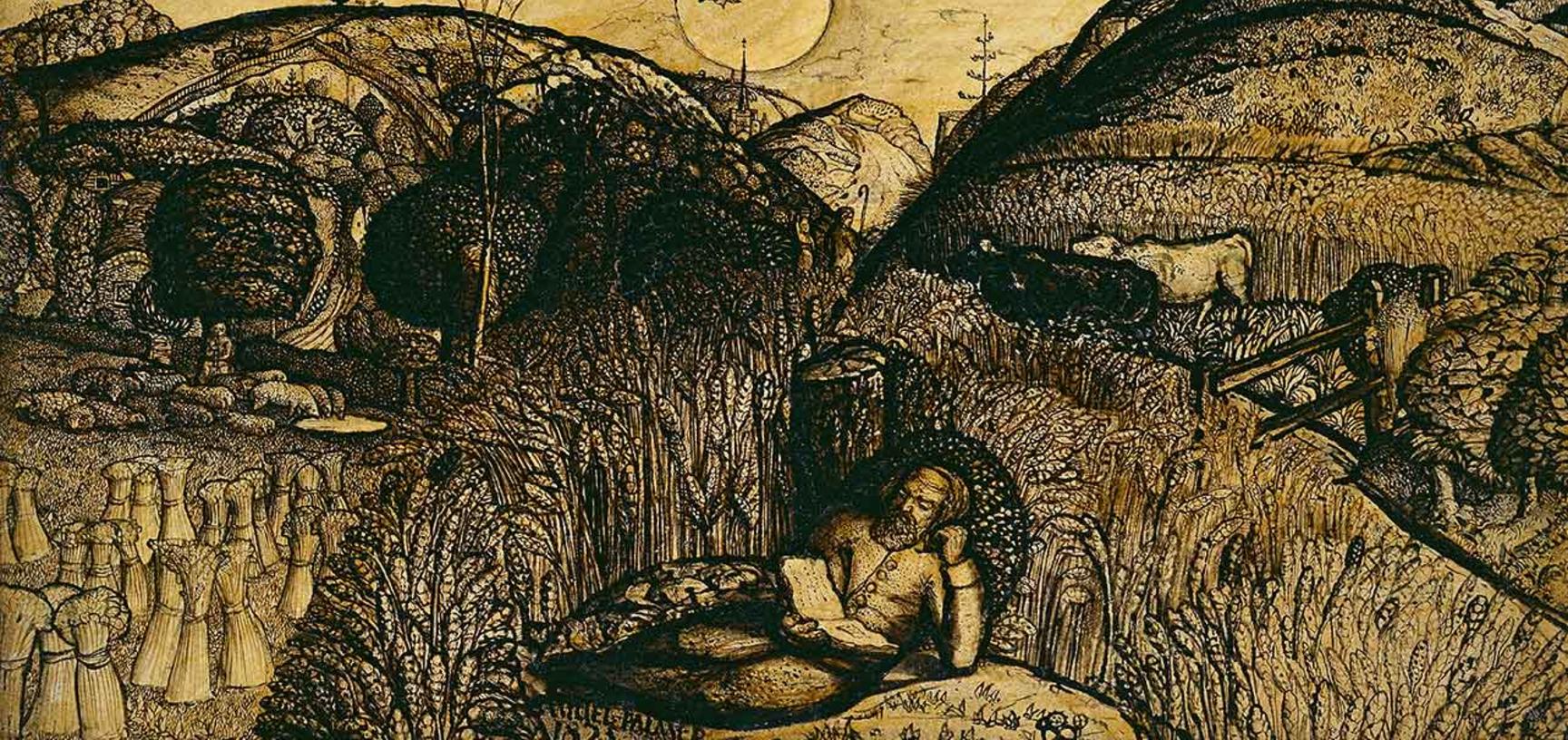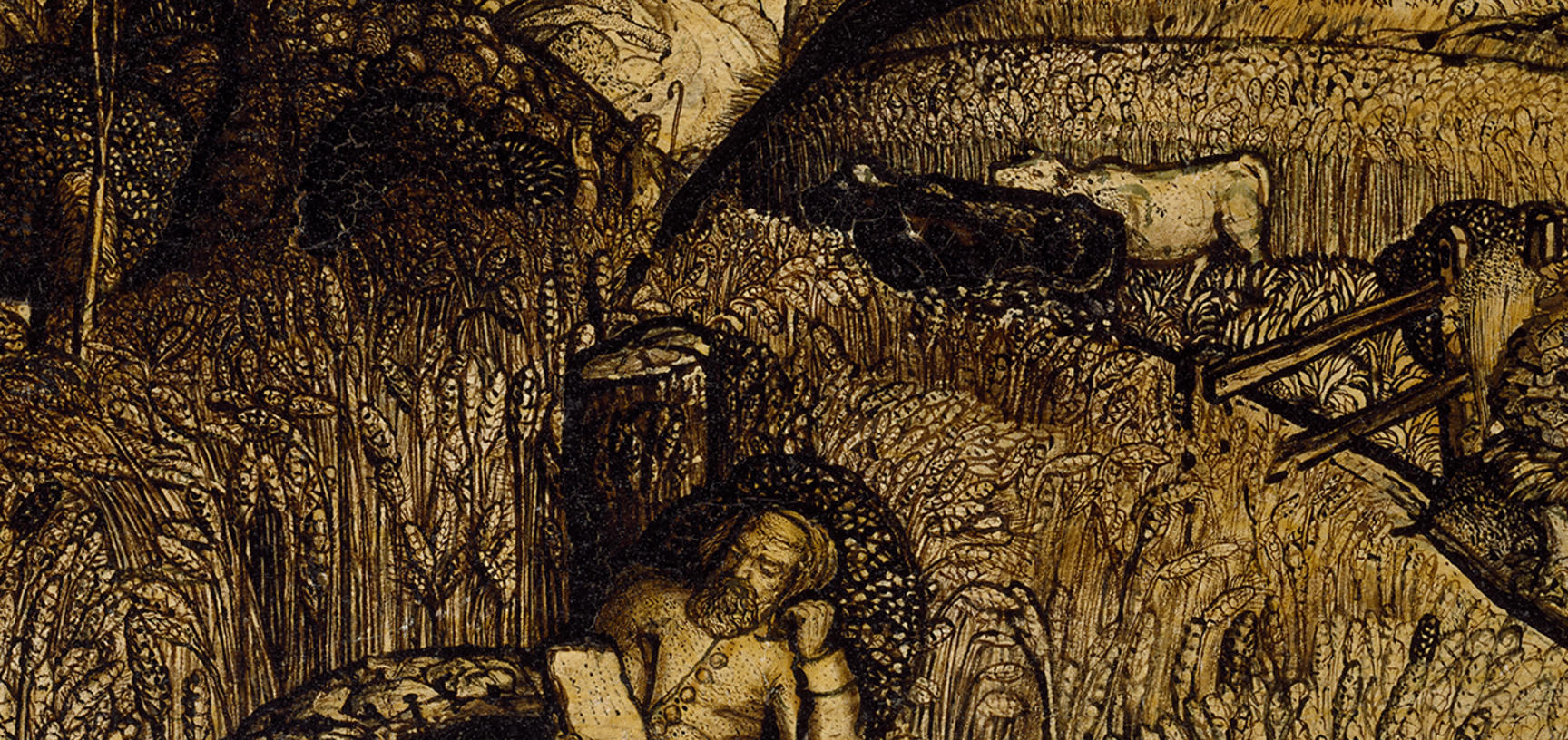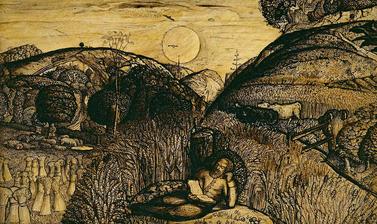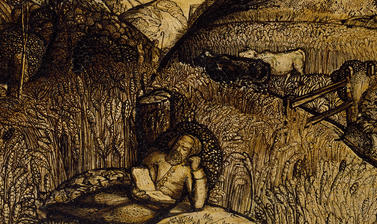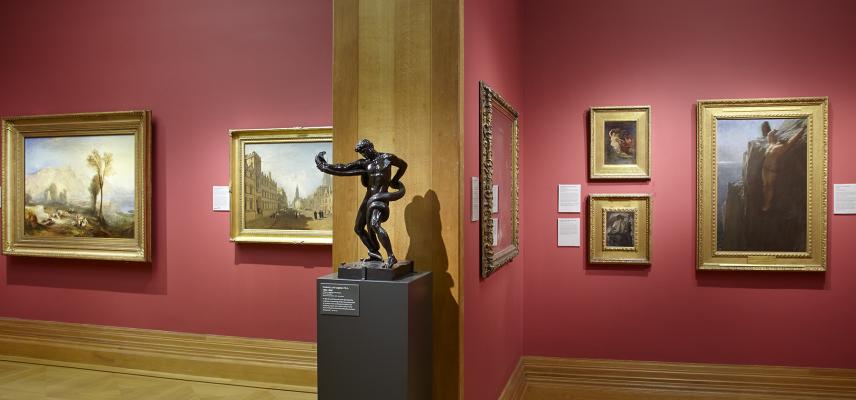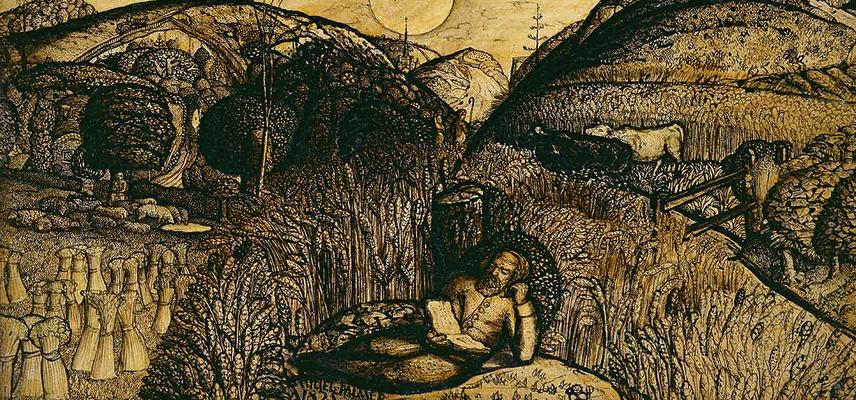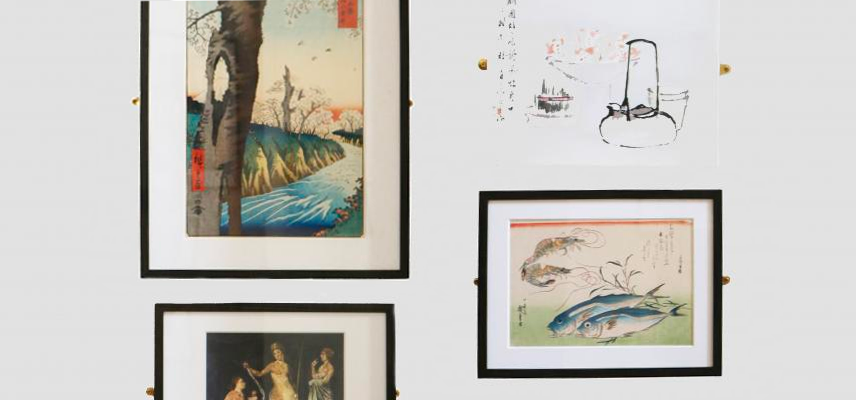THE VALLEY THICK WITH CORN
Samuel Palmer (1805–1881)
A precociously talented artist, Samuel Palmer was exhibiting his work at the Royal Academy when only 14. Within a few years he began to be guided by the landscape and portrait painter John Linnell, who introduced Palmer to William Blake. This meeting in 1824 had a decisive effect on the young man. Having up to that point produced relatively conventional picturesque views in London and the surrounding area, Palmer was inspired by Blake’s powerful imagery derived from the Bible, Milton and Dante and he now began to work in the 'visionary' style that was to characterise his art for the next ten years.
The title of this work comes from Psalm 65, and the composition is characteristic of Palmer's belief in the munificence of God's bounty. The reclining figure reading in the foreground has been interpreted as Christian, the protagonist in Bunyan's Pilgrim's Progress, resting halfway up the Hill of Difficulty. Iconographically, he descends from reading figures representing melancholia. The dream-like atmosphere is emphasized by the absence of perspective and such details as the disproportionate size of the ears of grain in the foreground. While much of the detail is extremely painstaking, the overall conception and composition of the drawing are of consummate mastery.
The six sepia drawings of 1825, of which this is one, are the earliest and most individual expressions of Palmer's unique genius and can be seen in the Western Art Print Room. These visionary works were forgotten until the 1920s, when Palmer's early landscape drawings became the crucial influence for English Neo-Romantics.
The Valley Thick with Corn, Samuel Palmer (1805-1881)
1825
Pen and dark brown ink with brush in sepia mixed with gum; varnished, 18.2 x 27.5 cm
Purchased, 1941
View on our online Collection Online Site: WA1941.103
License this image - visit the Ashmolean Image Library


